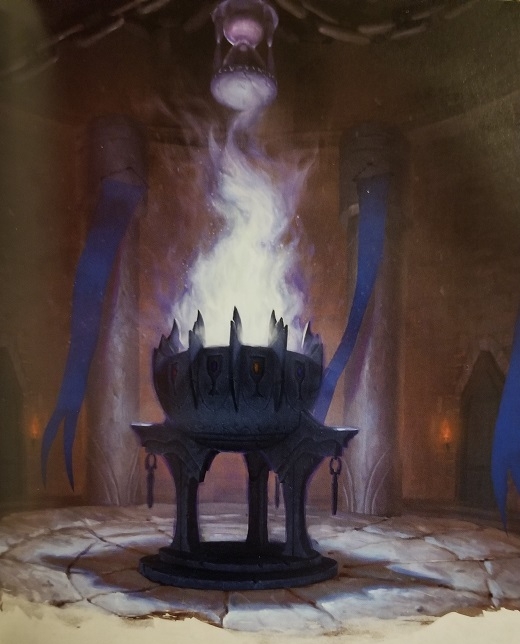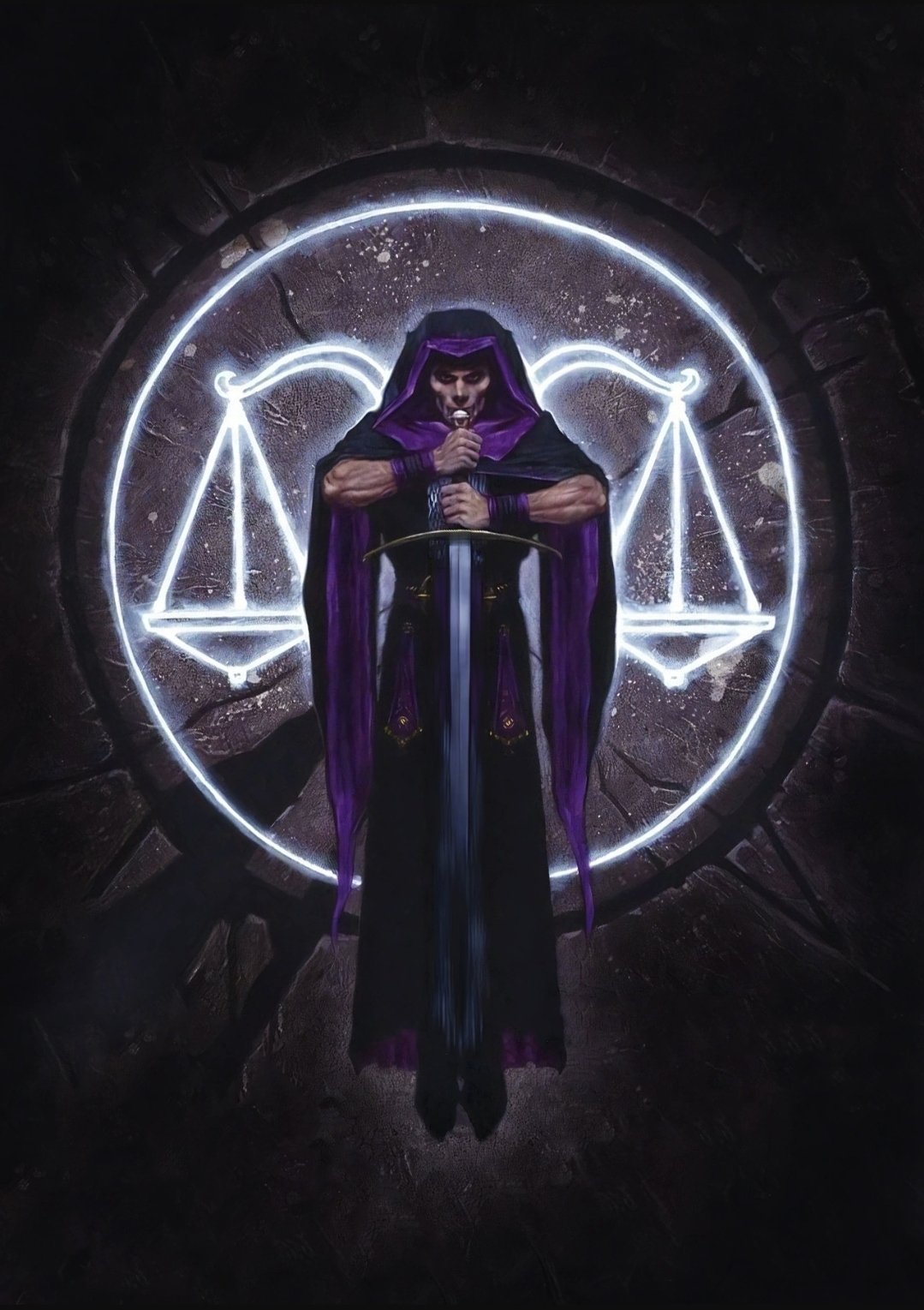The new Grave Domain Cleric, as revealed in the Horror Subclasses Unearthed Arcana, turns the spooky vibes up in a big way.
It seems weirdly emblematic of D&D 5.5E that Clerics get a Necromancy subclass before Wizards. Clerics have always been better at necromancy—and this is true going back through several editions, when evil Clerics could command the undead by presenting their profane symbols. Or when they had access to the real good necromancy spells that Wizards never got. And the Grave Domain Cleric, out of the Horror Subclasses Unearthed Arcana continues this fine tradition in the new edition. Because in the playtest, it’s more about doing necromancy than ever. Sort of.
The Grave Domain Cleric – For Certain Values of the Word “Necromancy”
It all depends on how you look at it. Because Grave Domain Clerics are, at their core, dedicated to stamping out the undead wherever they may be. Sure. It just so happens that a number of their class features feel like something you’d expect a black-robed Wizard with a penchant for skull iconography to do.
Not that I think this is a bad thing. But rather to point out that it’s kind of ironic that the Cleric subclass that’s dedicated to making sure life and death stay separate. To making sure that death is a “foundational, natural, and inevitable part of the multiverse”.
Which is another way of saying these are the kinds of Clerics who are quick to point out that the Death card isn’t inherently bad—it just means change. But for all that, they are remarkably good at using necromancy to kill the living. Or heal them, depending. It’s all part of making sure the boundary between life and death stays intact.
“The Grave Domain concerns itself with the boundary between life and death. To thse who tap into this domain’s power, death is a foundational, natural, and inevitable part of the multiverse. Such Clerics seek to destroy Undead and strive to shepherd spirits to the afterlife (whether those spirits want to go or not).
The magic f this domain also allows these Clerics to stave off death for a time, particularly for those who still have some great work toa ccomplish in the world. But this is merely a delay of death, not a denial of it, for the grave will always claim its due.
Pretty metal, if you think about it.
It All Starts With the Circle of Life Mortality
And starting at level 3, you get a number of features that bear out this fantasy of shepherding life and death in equal measure. Do they always hit the mark? I don’t think so. But let’s take a look just the same, starting with the Circle of Mortality. This is a classic WotC experimenting in 5.5E that gives two different features: a bonus 1d4 when dealing damage to a Bloodied creature; and granting maxed out hit points on any healing spell whenever you cast one on a creature with 0 hit points.
It’s a boost to healing and damage. But I don’t know how fiddly it will ultimately feel to add the extra d4. It could just be a great time. But I could also see it being the sort of thing where the player and/or the DM forget about Bloodied monsters taking extra damage. It adds an extra thing to check for. Less so with the healing spell thing, because it’s less rolling.
Grave Domain Clerics also get a special Channel Divinity, Path to the Grave, which lets them curse one creature within 30 feet until the start of the Cleric’s next turn. While cursed, the creature has Disadvantage on attack rolls and saves, and whenever an ally hits it, you can end the curse without any action required, and deal an extra 1d8 + Cleric Level in Necrotic or Radiant Damage.
But the real meat of the class is its list of bonus spells. Because Clerics are at their heart spellcasters, even if they fight in melee. And to this end, they get bonus spells that turn them into powerhouses of necromancy. Seriously, this list of spells reads like the campaign’s main villain’s spellbook: Bane, Ray of Enfeeblement, Vampiric Touch, Blight, Hold Monster, Raise Dead. They get other spells, too, but they always have one foot in “evil necromancy” territory.
Higher Levels of Death – The Grave Domain Cleric Levels Up
At higher levels, the Grave Domain Cleric gets few other features. The extra bonus spells really do a lot of the heavy lifting. But there are still two we haven’t covered. At 6th level, Sentinel at Death’s Door gives the Cleric’s player yet another reason to ask if a creature is Bloodied. Because whenever a Bloodied creature within 30 feet of the Cleric is hit, they can use a reaction to halve the attack’s damage, protecting a party member or other ally from harm.
Or take the new Divine Reaper feature, at 17th level, which is the capstone to the class. Guess how many different benefits this provides. Yup, that’s right, it’s two more. First is Enhanced Necromancy, which just goes to show Grave Domain Clerics are never beating the allegations. This feature lets you spend a Channel Divinity use whenever you cast a Necromancy spell of 5th level or lower. Doing so lets you twin the spell, targeting another nearby creature within the spell’s range.
Meanwhile Keeper of Souls means the high level Cleric can reap souls and turn them into hit points. I’ll explain. Whenever an enemy dies within 60 feet of you, you get to heal yourself or a creature within 60 feet of you for [3 x Cleric Level] hit points. So 51 hp to start with. And you can do this once per Short or Long Rest.
All in all, the Grave Domain Cleric feels, to me, like it’s trying to find the right identity. Lackluster subclass features just don’t have the same dramatic feel that even other Cleric subclasses get. Even when the features do seem to hit hard, they’re pretty evenly split on either boost heals or necromancy. It might be nice to see a heavier blend of the two. But that’s just my opinion. And YOUR opinion is the one that WotC wants. Give it to them by filling out the Horror Subclasses Unearthed Arcana survey—or just check out the UA. You’ll find both UA and survey at the link below!
Be sure and let WotC know what you REALLY think!
Subscribe to our newsletter!
Get Tabletop, RPG & Pop Culture news delivered directly to your inbox.
Don’t Miss:
Read more at this site






